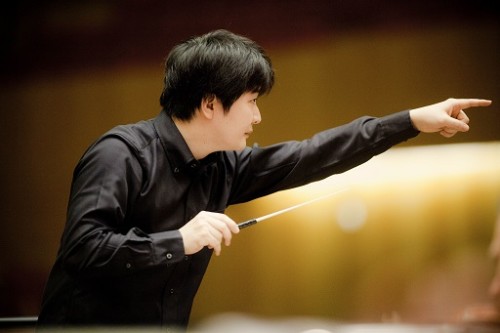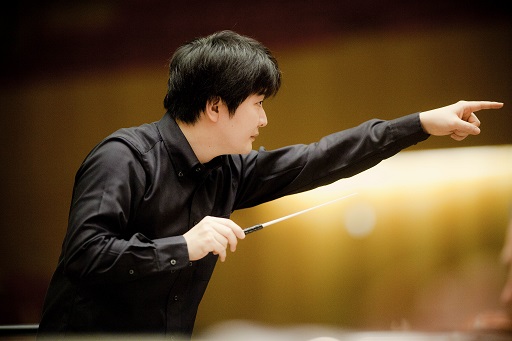 United States Saint-Saëns, Chopin: Benjamin Grosvenor (piano), Joseph Adam (organ), Seattle Symphony Orchestra / Kazuki Yamada (conductor), Benaroya Hall, Seattle, 30.6.2018. (ZC)
United States Saint-Saëns, Chopin: Benjamin Grosvenor (piano), Joseph Adam (organ), Seattle Symphony Orchestra / Kazuki Yamada (conductor), Benaroya Hall, Seattle, 30.6.2018. (ZC)

Saint-Saëns – Danse macabre Op.40; Symphony No.3 ‘Organ’ in C minor, Op.78
Chopin – Piano Concerto No.2 in F minor, Op.21
For their final concert series of the 2017-2018 season, the Seattle Symphony and guest conductor Kazuki Yamada stacked the program with crowd favorites. Yamada, who is the Principal Conductor and Artistic Director for the Orchestre Philharmonique de Monte Carlo, explained in a written preamble that the program was an immersion in the sensory qualities of music. The program began with Saint–Saëns’ familiar tone poem Danse macabre and closed with his towering Organ Symphony. In between, British pianist Benjamin Grosvenor joined the orchestra for Chopin’s early Second Piano Concerto.
Chopin’s Piano Concerto No.2 — actually the first he composed — serves as an important bridge between the classical and romantic periods. The composer transforms the classical piano concerto format, perfected by Mozart and updated by composers like Hummel, into a new and expressive standard. The result is surprising given Chopin’s disdain for the music being produced by his contemporaries, such as Liszt.
Unlike other Romantic concertos, the focus of Chopin’s Piano Concerto No.2 is entirely on the soloist; there is no struggle between the instrument and the orchestra. The ensemble opens the concerto, but with the piano’s entrance, the former recedes to a supporting role. Grosvenor, who burst onto the classical scene in 2004 as a finalist in the BBC Young Musician Competition, was a sensitive and attentive soloist. For the wrenchingly beautiful second movement, a nocturne, Grosvenor’s expressive playing aimed right for the audience’s heart. Every note, every phrase was imbued with feeling. He moved effortlessly along the keyboard, making each virtuosic moment seem easy. The orchestra, in rare moments when Chopin brought them back into the spotlight, equaled Grosvenor’s keyboard brilliance. A burnished orchestral prelude, an unforgettable bassoon solo in the slow movement, and a vigorous finale stand out.
While both the Danse macabre and Organ Symphony are clearly romantic works, neither probes the emotions like Chopin’s concerto. With Elisa Barston’s purposefully mistuned violin at the forefront, Danse macabre depicts a wild, sexually tinged graveyard party. Even though Barston and the orchestra executed the piece well, Yamada’s own direction seemed more controlled than wild. The Seattle Symphony is playing better than ever, and Yamada should have untethered the ensemble from his rigid conducting.
Yet Yamada’s firm grip on the score was surprisingly effective for the Organ Symphony. The simple opening four-note motif is developed in nearly endless ways throughout the piece. Yamada never let the audience lose sight of the source material, and he made sure every color in Saint-Saëns vast palette was heard. Yamada, because of his attention to the score — and obvious appreciation for it — summoned a memorable transition from allegro to adagio in the first movement, and the introduction of the organ. Saint-Saëns subtly shifts the balance: as the orchestra’s playing diminishes, the organ emerges, and Yamada delicately crafted a complementary relationship between the two. Later in the symphony, this approach proved invaluable, making a noble conclusion to the season.
Zach Carstensen
